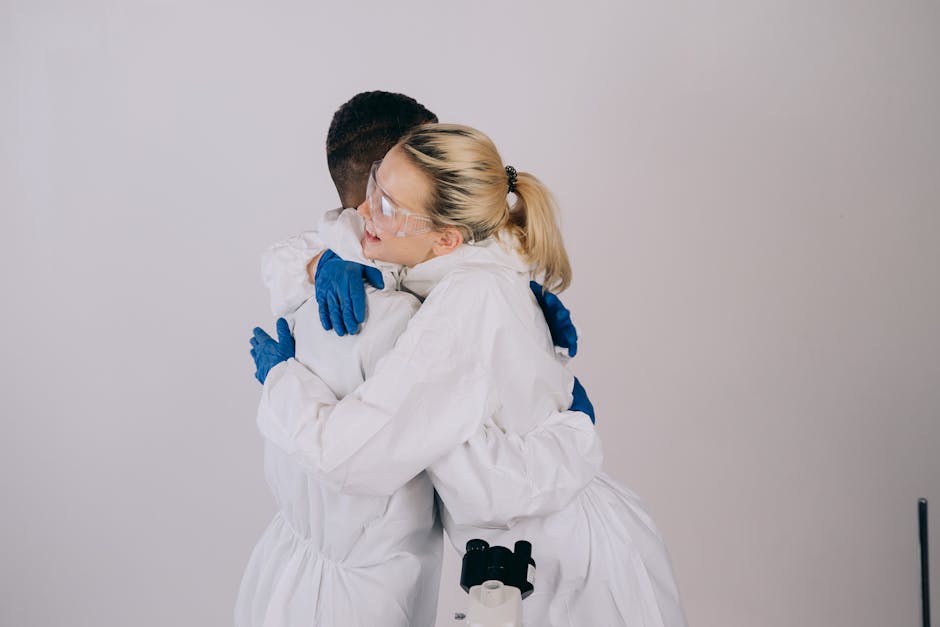
Safe Sun Exposure and Skin Protection
Safe Sun Exposure and Skin Protection
Sunlight is essential for our well-being, providing vitamin D and boosting mood. However, excessive sun exposure can lead to skin damage, premature aging, and even skin cancer. Balancing the benefits and risks of sun exposure is crucial for maintaining healthy skin. This guide will help you understand how to enjoy the sun safely while protecting your skin from harm.
Understanding Sun Exposure
Before diving into protection methods, it’s important to understand how the sun affects our skin.
The Benefits of Sunlight
- Vitamin D Production: Sunlight helps our bodies synthesize vitamin D, which is vital for bone health and immune function.
- Mood Enhancement: Exposure to sunlight increases serotonin levels, reducing stress and improving mental well-being.
- Regulation of Sleep Cycles: Natural light helps maintain our circadian rhythm, promoting better sleep.
The Risks of Overexposure
- Sunburn: UVB rays cause painful burns and long-term skin damage.
- Premature Aging: UVA rays penetrate deep into the skin, leading to wrinkles and loss of elasticity.
- Skin Cancer: Prolonged UV exposure increases the risk of melanoma and other skin cancers.
How to Protect Your Skin
Protecting your skin doesn’t mean avoiding the sun entirely—it means being smart about exposure.
Choose the Right Sunscreen
- Broad-Spectrum Protection: Look for sunscreens that block both UVA and UVB rays.
- SPF 30 or Higher: A higher SPF provides better protection, but no sunscreen blocks 100% of UV rays.
- Water-Resistant Formulas: If swimming or sweating, opt for water-resistant sunscreen and reapply every two hours.
Wear Protective Clothing
- Long-Sleeved Shirts and Pants: Lightweight, tightly woven fabrics offer better protection.
- Wide-Brimmed Hats: Protect your face, neck, and ears from direct sunlight.
- UV-Blocking Sunglasses: Shield your eyes from harmful rays to prevent cataracts and other eye damage.
Seek Shade and Time Your Exposure
- Avoid Peak Hours (10 AM – 4 PM): UV rays are strongest during midday.
- Use Umbrellas or Trees for Cover: When outdoors, stay in the shade as much as possible.
- Monitor the UV Index: Check daily UV forecasts to plan outdoor activities safely.
Special Considerations
Different skin types and lifestyles require tailored sun protection strategies.
For Children and Babies
- Keep Infants Out of Direct Sun: Babies under six months should avoid sunscreen; instead, use shade and protective clothing.
- Use Gentle, Mineral-Based Sunscreens: Zinc oxide or titanium dioxide are safer for sensitive skin.
For People with Darker Skin
- Higher Melanin Doesn’t Mean Full Protection: While darker skin has more natural SPF, it’s still vulnerable to UV damage.
- Watch for Uneven Pigmentation: Sun exposure can worsen hyperpigmentation in some individuals.
For Outdoor Enthusiasts
- Reapply Sunscreen Frequently: Sweating and water activities reduce sunscreen effectiveness.
- Wear UPF-Rated Clothing: Some sportswear is designed with built-in UV protection.
Recognizing and Treating Sun Damage
Even with precautions, sun damage can occur. Knowing the signs helps in early intervention.
Symptoms of Sunburn
- Red, painful skin
- Swelling and blisters
- Peeling after a few days
How to Soothe Sunburn
- Cool Compresses: Apply a damp cloth to reduce heat.
- Aloe Vera Gel: Soothes inflammation and promotes healing.
- Hydrate: Drink plenty of water to help skin recover.
When to See a Doctor
- Severe blistering
- Fever or chills
- Signs of infection (pus, swelling)
Long-Term Skin Health
Preventing sun damage today ensures healthier skin in the future.
Regular Skin Checks
- Self-Examinations: Look for new moles or changes in existing ones.
- Annual Dermatologist Visits: Professionals can detect early signs of skin cancer.
Healthy Skin Habits
- Moisturize Daily: Hydrated skin repairs itself better.
- Eat Antioxidant-Rich Foods: Vitamins C and E help combat UV damage.
Conclusion
Safe sun exposure is about balance—enjoying sunlight’s benefits while minimizing risks. By using sunscreen, wearing protective clothing, and being mindful of timing, you can protect your skin from harm. Remember, healthy skin habits today lead to a lifetime of radiant, youthful skin. Stay sun-smart and enjoy the outdoors safely!# Safe Sun Exposure and Skin Protection: A Complete Guide
Sunlight plays a vital role in our health and wellbeing, yet unprotected exposure can lead to serious skin damage. This comprehensive guide will help you understand how to safely enjoy the sun while protecting your skin from harmful UV radiation.
The Dual Nature of Sunlight
Benefits of Moderate Sun Exposure
-
Vitamin D Synthesis
- Sunlight triggers vitamin D production, essential for bone health and immune function
- Just 10-15 minutes of midday sun several times weekly meets most people’s needs
-
Mental Health Benefits
- Sun exposure boosts serotonin levels, improving mood
- Helps regulate circadian rhythms for better sleep
-
Potential Health Benefits
- May help lower blood pressure
- Could reduce risk of certain autoimmune diseases
Risks of Excessive Exposure
-
Immediate Effects
- Painful sunburns
- Heat exhaustion or heat stroke
-
Long-Term Damage
- Premature aging (wrinkles, leathery skin)
- Hyperpigmentation and sun spots
- Increased risk of skin cancers
Understanding UV Radiation
Types of UV Rays
-
UVA Rays
- Penetrate deep into skin layers
- Primary cause of premature aging
- Present all day, year-round
-
UVB Rays
- Affect skin’s outer layers
- Main cause of sunburns
- Most intense between 10am-4pm
-
UVC Rays
- Mostly absorbed by ozone layer
- Not typically a concern
The UV Index Scale
| UV Index | Risk Level | Protection Needed |
|---|---|---|
| 0-2 | Low | Minimal |
| 3-5 | Moderate | Hat + sunscreen |
| 6-7 | High | Seek shade |
| 8-10 | Very High | Limit exposure |
| 11+ | Extreme | Avoid sun |
Comprehensive Sun Protection Strategies
1. Sunscreen Application
Choosing the Right Product:
- Broad spectrum (UVA/UVB protection)
- SPF 30+ for daily use, SPF 50+ for extended exposure
- Water-resistant if swimming/sweating
Proper Application:
- Apply 15-30 minutes before sun exposure
- Use about 1 ounce (shot glass full) for full body
- Reapply every 2 hours, or after swimming/toweling
2. Protective Clothing
Effective Options Include:
- UPF-rated clothing (UPF 30-50+)
- Wide-brimmed hats (minimum 3-inch brim)
- Sunglasses with UV400 protection
Fabric Considerations:
- Tightly woven fabrics offer better protection
- Dark colors generally block more UV than light colors
- Dry fabrics protect better than wet ones
3. Smart Sun Behavior
Timing Matters:
- Seek shade during peak hours (10am-4pm)
- Plan outdoor activities for early morning/late afternoon
Environmental Factors:
- UV intensity increases at higher altitudes
- Sand, water, and snow reflect UV rays
- Clouds don’t block all UV radiation
Special Considerations
For Different Skin Types
-
Fair Skin
- Highest risk of sun damage
- Requires most stringent protection
-
Darker Skin Tones
- Still vulnerable to UV damage
- Higher risk of hyperpigmentation
-
Children
- More sensitive skin
- Requires special baby-safe sunscreens
For Outdoor Activities
Beach/Swimming:
- Reapply sunscreen more frequently
- Wear rash guards for added protection
Winter Sports:
- Snow reflects up to 80% of UV rays
- Don’t forget sunscreen on cold, sunny days
Recognizing and Treating Sun Damage
Signs of Sun Overexposure
- Redness and tenderness
- Swelling or blisters
- Fever or chills (sun poisoning)
First Aid for Sunburn
-
Cool the Skin
- Take cool (not cold) showers
- Apply damp cloths to affected areas
-
Moisturize
- Use aloe vera or fragrance-free lotions
- Avoid petroleum-based products
-
Stay Hydrated
- Drink extra water
- Avoid alcohol which dehydrates
When to Seek Medical Help
- Severe blistering over large areas
- High fever or severe pain
- Signs of infection (pus, red streaks)
Long-Term Skin Health
Prevention Strategies
-
Regular Skin Checks
- Monthly self-exams for new/changing moles
- Annual professional skin exams
-
Year-Round Protection
- UV rays can damage skin even in winter
- Maintain sun protection habits daily
-
Skin-Nourishing Habits
- Stay hydrated
- Eat antioxidant-rich foods
- Use moisturizers with ceramides
Understanding Skin Cancer Warning Signs
Remember the ABCDE rule for moles:
- Asymmetry
- Border irregularity
- Color variation
- Diameter (>6mm)
- Evolving/changing
Conclusion
Safe sun exposure requires a balanced approach that maximizes benefits while minimizing risks. By understanding UV radiation, using proper protection methods, and being vigilant about skin health, you can enjoy the outdoors safely at any age. Remember that sun protection isn’t just for summer vacations – it’s a daily health practice that pays dividends for a lifetime of healthy skin.
Implement these strategies consistently, and you’ll be able to appreciate the sun’s warmth and energy without compromising your skin’s health and appearance. Stay sun-smart and protect your skin every day!







